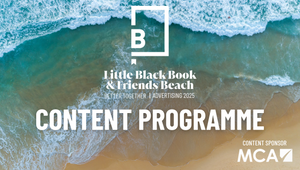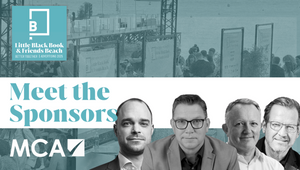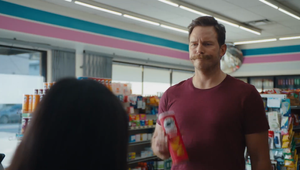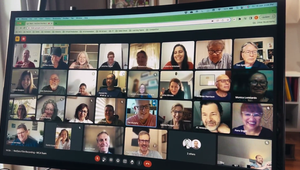
The Great Unravelling: Is Collapse of Iconic Post Houses an Industry Warning?

Just a few years ago, names like The Mill, MPC, Mikros Animation in Paris (all part of Technicolor), Jellyfish Pictures and this week Glassworks in London (and many more I am sure around the world) were synonymous with excellence in visual storytelling. They were the titans of video post-production - the unsung heroes behind the world’s most beautiful ads, animated features, and mind-bending VFX sequences. Now? Many of those names have vanished, shuttered, or been broken up and sold for parts.
So what happened? And more importantly - what’s next?
An Industry in Flux: What Went Wrong
The high-profile closures we've seen since 2023 aren’t just isolated cases of bad management or poor cash flow. They are symptomatic of a systemic shift. A few key fault lines stand out:
The Double Strike Hangover
The WGA and SAG-AFTRA strikes in 2023 brought the global production engine juddering to a halt. For post houses living hand-to-mouth on project-based income, this wasn’t a pause - it was a cliff edge. And many simply didn’t have the runway to survive it.
Cost Inflation Meets Payment Delays
Inflationary pressure, soaring rents, rising wages - and yet payment terms are still treated like elastic bands by procurement departments and agencies delaying payments. Some studios waited 90–180 days to be paid while still fronting costs for hardware, software, talent and overhead. That kind of financial whiplash will flatten even the best-run business.
Tech Disruption, Poorly Navigated
While some houses embraced AI and automation, others were paralysed - either overwhelmed by the pace of change or overly reliant on legacy business models. The irony? Those who failed to adapt got swept away. Those who tried to scale AI prematurely lost their creative soul and clients followed suit.
A Fragmented Client Landscape
Today’s clients want modularity. They want 'production unbundled.' They want specialist partners that can plug in and scale up. Large, monolithic post houses built for AOR-style retainer relationships have struggled to remain relevant in a gig-based, agile market.
The Fallout: Who’s Gone and Who's Still Standing
We’ve said goodbye to:
So this year alone we have seen The Mill, once the global goliath and benchmark for commercial post and Mikros Animation (both part of Technicolor). Jellyfish Pictures, shuttered this year after years of award-winning work, and just this week Glassworks. It’s not just tragic. It’s telling. These were not fringe players. They were iconic.
So… Who’s Doing Well? And Why?
Interestingly, not all post houses are suffering. A new breed of studio is quietly thriving. Here's what they have in common:
Smaller, Nimbler, Hungrier
Lean, specialist outfits that can scale up or down on demand - like Untold Studios, Electric Theatre Collective, or No.8 London - are picking up work because they’re agile and less encumbered by legacy infrastructure.
AI-Enabled, Human-Curated
The studios doing best are using AI as a tool, not a replacement. Tools like Runway, Sora, and even GenAI-enhanced editing suites are being folded into workflows with creative oversight. It’s augmentation, not automation.
Global and Remote-Ready
Cloud-native post houses that can collaborate globally, instantly - without dragging everyone back into a suite in Soho - are delivering speed and cost-efficiency. The pandemic taught clients remote workflows were not just possible, but often better.
Sustainable by Design
Studios that measure carbon, reduce waste, and think sustainably are now being favoured by procurement teams under pressure to hit ESG goals. Post is being scrutinised just like production - and green is now a competitive advantage. All our clients are demanding measurements on sustainability.
SO…. What’s Around the Corner?
Here’s what I believe we’ll see next:
Micro-studios with macro capabilities - freelancer collectives powered by shared infrastructure and cloud collaboration
Agentic creative ecosystems - where AI and humans co-create, and creative directors become 'curators of possibility'
Client in-sourcing - yes, more brands are building in-house teams, but they still need guidance. The post house of the future may look more like a consultancy
Bespoke + Modular - winning shops will offer tailored, transparent pricing and flexible service layers - not bloated retainers or opaque budgets
Final Thoughts
The closure of iconic post houses should give us pause - but not despair. We’re not witnessing the death of post-production. We’re witnessing its metamorphosis.
As ever, the creative industries reward those who adapt, who stay lean, who see the wave coming and paddle before it breaks.
To those still standing - now is your moment to reimagine what a post house can be. Not just a facility, but a creative force. Such as the amazing team from Mayda Creative who are ex Mill and have set up what they call a collective of directors, technologists, designers and producers, working across branded content, creative technology and interactive experiences - from long-form films to immersive real-time activations. They clearly grabbed the opportunity to be more than just a post house but an extra force in the creative ideation process.
I 100% believe that while the tools will keep evolving, there will still be a need for great storytelling? That, mercifully, isn’t going anywhere.














